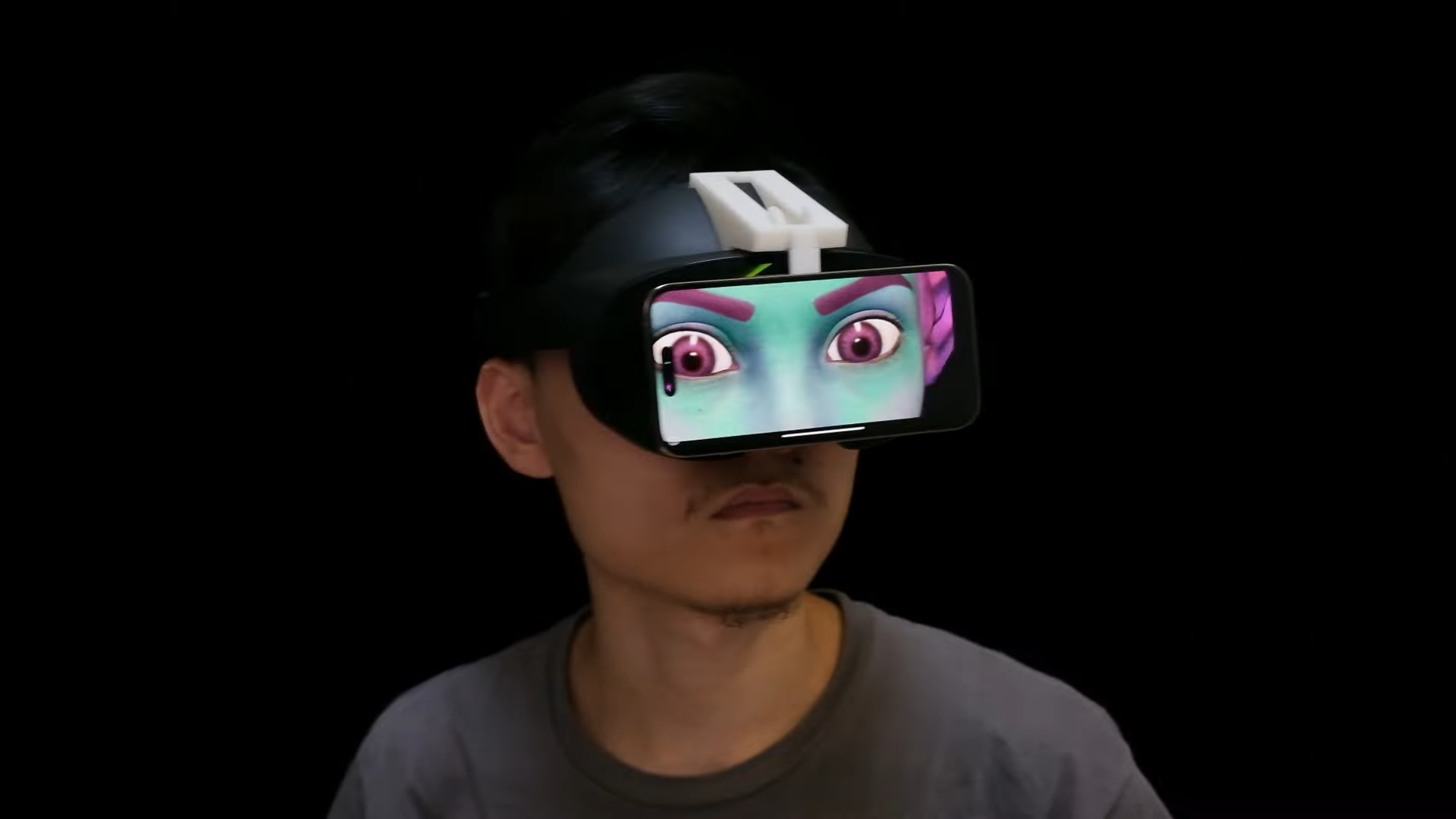A developer recreated Apple Vision Pro’s front display on a Meta Quest Pro using an iPhone.
One of Vision Pro’s unique features is its ‘EyeSight’ lenticular front display, which shows a rendered view of your upper face to other people in the room when they’re nearby. When an app is blocking your view of the physical environment EyeSight shows a translucent colored pattern in front of your eyes, and when you’re in a VR app the pattern becomes opaque.
Vision Pro will start at $3500 though, so developer Adam 放学臻 decided to recreate it on his $1000 Meta Quest Pro by attaching his iPhone to the front of the headset. Adam’s VR app reads the Quest Pro eye tracking data and sends it to his iOS app, which renders a virtual avatar.
Adam is even leveraging the iPhone’s FaceID sensor suite to position the face and eyes at the correct angle to the person looking at it, and turn the screen back to a colored pattern when no one is nearby. This is a clever alternative to Vision Pro’s lenticular display, though unlike Apple’s solution it only works for one nearby person, not multiple.
To be clear though, this is just a fun experiment, not a practical accessory. This only works in the specific VR app Adam developed for this project as the Meta Quest platform doesn’t support third party background apps.
Further, the iPhone blocks the view of the Quest Pro’s frontal tracking cameras and color camera, rendering real world passthrough unusable and forcing positional tracking to fall back to only using the side cameras.
Still, it’s a technically impressive experiment, and it may hint at a method future headsets could use to show your eyes without a lenticular display.





